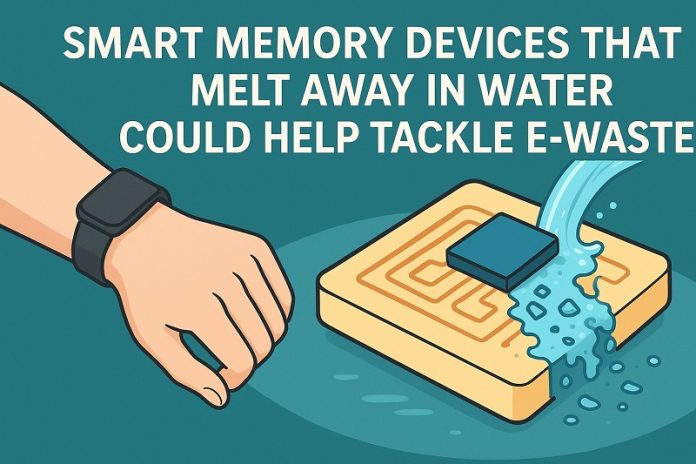
As technology becomes a bigger part of our everyday lives, so does the problem of electronic waste.
From smartwatches and fitness trackers to medical patches and implantable sensors, we are using more electronics than ever—many of which are thrown away after short-term use. These discarded devices contribute to the fast-growing issue of e-waste, which harms the environment.
To help solve this problem, researchers at the Korea Institute of Science and Technology (KIST) have created a special kind of memory device that works well and then safely dissolves in water.
The team, led by Dr. Sangho Cho and Dr. Yongho Joo, developed a new material that can store electronic data effectively and completely break down in water within just a few days, leaving nothing behind.
This material is safe for the human body, making it useful for medical implants. It also offers control over when it begins to break down.
By adjusting the thickness and ingredients of a protective outer layer, scientists can decide how long the device should last before it starts dissolving.
Once the protective layer is gone, the memory device naturally breaks apart in about three days.
Previous efforts to create water-soluble electronics often failed to store data well or couldn’t survive repeated bending or use. To fix that, the KIST team designed a new material by combining two key ingredients: TEMPO, an organic molecule that stores electrical information, and PCL, a biodegradable plastic. Together, they form a powerful material—called PCL-TEMPO—that can both store data and break down naturally.
The memory devices made from this material showed impressive results. They could clearly tell the difference between ON and OFF signals over a million times and hold onto stored data for over 10,000 seconds.
They also remained undamaged after 250 write-erase cycles and even after being bent more than 3,000 times. These features make the material unusually strong and reliable for an organic device.
This breakthrough could be useful not just for implantable medical tools but also for one-time-use health monitors, eco-friendly data storage devices, surgical implants that disappear inside the body, and even temporary military equipment.
Because these devices can dissolve on their own, they could eliminate the need for surgery to remove implants—reducing both patient discomfort and medical costs.
Dr. Cho called the invention a major step forward, saying it is the first time a high-performance organic memory device has been designed to destroy itself physically. The team now hopes to improve the technology by adding features like self-repair and light sensitivity, bringing us closer to smarter, greener electronics.
Source: KSR.



